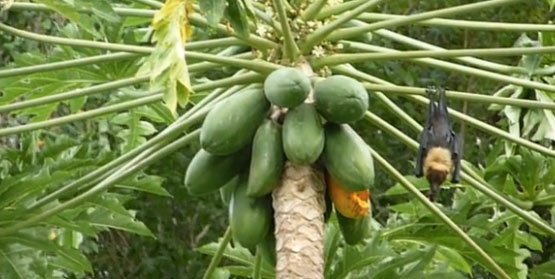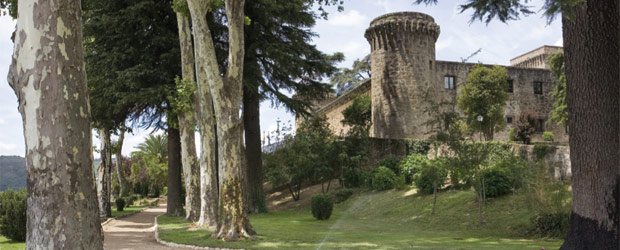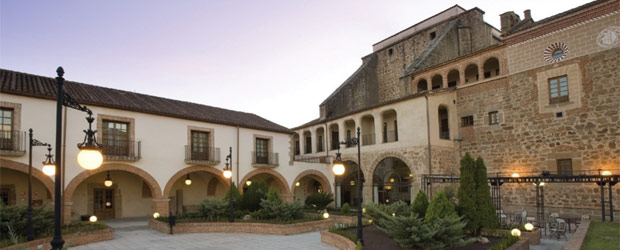"Criadillas" AKA: Rocky Mountain Oysters or Potatoes?
We’re crazy for criadillas! There are two types of criadillas in Spain, one is flora and one is fauna. Let’s start with the fauna first. Spanish bulls are known for their fierceness in the ring and their testicles are fantastic when done up in the fryer! Affectionately known in the USA as “bull’s balls” or “rocky mountain oysters”, in Spain criadillas, also called huevos de toro (“bull’s eggs”), are a delicacy, albeit an unusual one. They are rumoured to give the male that consumes them superior performance in the bedroom! Fortunately this delicacy is first removed from the bull at slaughter and later pounded, floured, spiced and fried and finally end up as an hors d’oeuvre with a perfect cocktail sauce to compliment.
They share the same name.
The second type is a Peruvian potato variety affectionately called criadillas that made it’s way to Europe in the 1500’s! Spain is known the world over for it’s numerous varieties of potatoes. This fact probably, at least partially, explains why five of the world’s top ten chefs are to be found in Spain. The spuds known as criadillas are no stranger to the cuisine-conscious Spaniards and have an amazing texture which is used as a foundation for several meat and fish dishes. They are versatile, creamy and coveted amongst the European haute cuisine crowd.
Boletus mushrooms AKA: Boletus edulis
We’re in love with meaty, mild and magnificent mushrooms! Packed with vitamins and minerals these fungi are fabulous for grilling or frying up in the cast iron. Wonderful with roasts and in sauces, these also do fish dishes proud as well. Mixed in with hamburger for that extra special something in the recipe, the Boletus not only does the body good, it tastes good as well. There has been an ongoing love affair with the Boletus in Europe, so much so that many countries have given it their own special nick name. Cepes in France, byelii-greeb in Russia, steinpilz in Germany and porcini in Italy. Like a member of the family the byelii-greeb saved many a Russian during the war, giving them a nutritious foundation food to keep them alive when none other was available.

Boletus edulis pores and underside
Today boletus has about 100 types and most are considered a gourmet mushroom. It likes to grow under spruces, and other conifers as well as hardwoods, sprouting up through the needles after about ten days of rain. In the Northern Hemisphere this usually occurs in September or October. This culinary ‘shroom is unique in that it doesn’t have gills underneath but pores which cause it to look as if it’s been poked repeatedly with a large pin. These pores should not get wet when cleaning the mushroom as they act as a sponge and take on water. It should be noted that most are edible, except for the ones with red pores. These are considered toxic and should not be consumed.
Wildlife in Fiji – A Fruit Bat Eating Papaya
There are a lot of great things about Fiji like the scuba diving, the fishing and incredible people. One of the things not really known or thought about is the tasty papaya. The fruit bats love them a lot and will be out day or night eating them up. Check out this one getting his fill on a ripe one.
The Guardians of Spanish Heritage – The Parador Hotels
Sweet Dreams Are Made Of These
Since 1928, the Spanish government at the initiative of Marqués Vega Inclán, King Alfonso XIII opened the first Hotel Parador of Tourism in the heart of the Gredos Mountain range in Navarredonda de Gredos, Ávila. For the last 82 years, the Parador Hotel Network has been rescuing ancient hilltop castles, intriguing historic fortresses, impressively enchanting monasteries, majestic medieval convents, princely palatial mansions, massive octagonal stronghold towers and noblemen´s manor houses. Additionally, they have been recruiting internationally renowned architect teams and restoration specialists to transform them into privileged paradises with 21st century comfort and hotels featuring superior amenities without losing their extraordinaire ambiances, fabled characters and historic circa details.
Furthermore, they are offering around the Iberian peninsula, expertise in the art of seducing palates with their 93 regional Tasters´ lunch and dinner cartes between 27 Euros – 32.50 Euros. My friend, and intercambio, Ana Maria Martin and I believe all 93 are worth visiting 365 days a year. Noted for maintaining their original concepts, one of which states, to act as the guardians of Spanish national artistic heritage while promoting superior quality tourism and dynamizing those regions that are lesser known. Now in the 21st millennium, the Parador Network maintains the founding principles while adopting them to the guests of today at all 93 of their spectacular establishments. Hasta invierno.
The Parador Network’s Extra Virgin Olive Oil Tastings
The long story of Spanish olive oil production has taken an unexpected twist. Botanists, chemists, journalists, sommeliers, olive oil makers, chefs and restaurateurs have laboriously worked their way back to concentrate on the oils´ natural starting point, the fruit itself. The Parador Hotel Network is providing their guests with a finely tuned tasting profile.
A handful of olive oil varieties we sampled are:
- Almaszaras de La Subbética, S.C.A.
- D.O. Carcabuey, Córdoba
Olive Variety: 100% Hojiblanca
Production: Ecological Organic Method
Tasting Notes: Equilibrium, complexity with green apple, herbs & spearmint
- Almaszaras de La Subbética, S.C.A.
- D.O. Carcabuey, Cordóba
Olive Variety: Hojiblanca and Picuda
Production: Conventional
Tasting Notes: Lightly almond reflecting an unusual equilibrium with piquant and bitter notes
- Aceites Campo Liva, S.L.
- D.O. Pegalajar, Jaén
Olive Variety: Picual, Hojiblanca, Arbequina & Frantoio
Production: Conventional
Tasting Notes: Green almonds, aromatic herbs and green Apple
- Rodau, S.L.
- D.O. Torroella de Fluvià, Girona
Olive Variety: Arbequina, Hojiblanca & Koreneiki
Production: Conventional
Tasting Notes: Mature fruit, green apples & green almond
Monastic Splendour On The Silver Route
Ancient Architectural Gems
Ages before the construction of this majestic monastery, monks were already residing behind the Parish church of San Miguel in what was once called The Santo Domingo Viejo. The community’s relocation to the new monastery took place while Fray Alfonso Maldonado was friar in 1477. Historians have traditionally attributed their sacred miracles to Saint Vincent Ferrer, who resuscitated the sole male child the duke and dutchess had. The monastery was severely damaged in the War of 1812, in which Spain fought for its independence from Napolean. It was reconstructed and renovated in 1850. Over the years it was occupied by various religious orders. The Fathers of Heart and Maria and the Servitas, were the last theological orders to occupy it.
[nggallery id=33]
The remains of the fortifications were found during archaeological research while carrying out the restoration of the building and it was confirmed that the Parador de Santo Domingo was a former fortress. Additionally, the area possessed a Sefardic synagogue and a Hebrew faith graveyard. Many artifacts had been found including a yad which is a pointer for reading, fragments of a hanukiyot which is a votive lamp and thus confirmed the existence of a significant Sefardic settlement in this area. The presence of human life in the area dates back into the remote past has been proven and a series of structures were partially built in caves.
Construction work on the monastery was directed by the master stone mason Pedro Gonzalez with the assistance of his son Francisco and the master craftsmans Maluenes, Dara and Garcia Escalante, who also collaborated on the two Plasencia Cathedrals.
The Monastery Complex
The 66 room Parador Hotel complex located in a small cosmopolitan city that flirts with all who encounter its treasures, is centered around the church which is almost cathedral like in proportions. The temple is reached through a large 17th century neo classical façade. Access to visit the the monastery complex is located on the Westside at an 18th century portico.
The Cloisters & Chapel Houses
The stunning proportioned cloister is late Gothic. The Profundis chapel was a most important room of its day and the star ribbed vaults date back to the 15th century.
Monumental 1577 Staircase In The Tapas Bar
The monumental staircase commonly called the Staircase of Air is especially noteworthy. It was built by Plasencia native Juan Alvarez in 1577. This architectural wonder rises without pillars, hanging almost in the air in a faultless study of thrust and executed with exceptional mastery.
The Wine Cellar, Bar De Copas & Chillout Lounge
The Hotel Parador ’s wine cellar, which dates back to the 15th century has been adapted to the needs of the 21st millennium guest however, it has been preserved virtually in its original state, with its embedded earthenware jugs, stone, bricks and ceiling vault. The perfect place to enjoy a wine or cocktail and enjoy the conversational background music.
Room 320 & Room 222
Firstly, Director Felix Lobo showed us ROOM 320, which houses the original walls of the Convent of Santo Domingo. The VIPS unique suite consists of 78 m2 and is divided into two large rooms each of which has its own cosy lounge to ensure maximum unwinding. The deep cherry red and white upholstery, period furniture and the fireplace all add to the warmth and romance of this suite. Our hotel ROOM 222 was absolutely a perfect place to spend a couple of nights. The wide ranging balcony views over the Gredos Mountain Range, pool, gardens and courtyard are divine.
Chef Luis Mora
- Mar : What is your culinary philosophy ?
- Luis: Adapting quality traditional products of the zone with modern concepts, reinterpretation and author creativity.
- Mar: Where have you studied ?
- Luis: I have been learning all my life as I was born into a family of chefs . My formal studies have been with the Parador Network. I have worked in the Parador Hotels of Chinchon, Antequera, Málaga, Hostería Del Estudiante in Alcalá de Henares and since October 2000 in the Parador of Plasencia.
- Mar: Your dream trip.
- Luis: The profound depths of Spain in all its regions.
- Mar: Tell us about autumn.
- Luis: Venison and wild hoofed game varieties, lamb, saffron, wild mushrooms Bolteus Eduli, Niscalos, chestnuts for desserts and red wine Tentudia from Almendralejos, Badajóz. I also employ some historic Sefardic ingredients.
- Mar: Your inspiration is derived from ?
- Luis: I read a lot, plus collaborate recipes with Juan Marí Arzak and Dani García.
Chef Luis Mora Savours Spanish Culture
- White wine: Sánz Clásico Rueda 2009
- Red wine: 50% Cabernet Sauvignon & 50% Tempranillo Tentudia 2005
- Torta del Casar sheepcheese & straight out of the oven assorted breads
- Palate cleanser French greenbean slaw & prawn salad
- The exquisite black cherry gazpacho
- Divine roast lamb with criadillas, Plasencia´s local potatoes
- Tecula Mecula: an ancient Roman almond gel concoction translating: For you, for me
- Sweet ripe stuffed fresh figs: D.O. Almohain, Cáceres
- Cañas: pastries with white chocolate filling
- Cherry sherbert
Hotel Parador Santo Domingo Convent
Plaza San Vincente Ferrer S.N.
Plasencia, Caceres 10600






